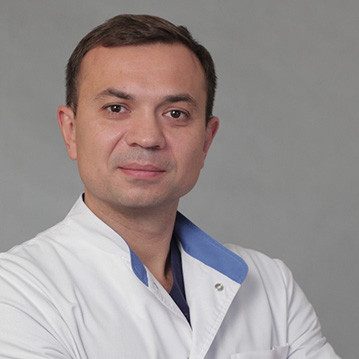Urinary fistulas are unnatural openings between the cavities of the organs of the reproductive and urinary systems. Pathology has different causes, occurs in women and men about the same. A large number of varieties of the defect requires an individual approach and the development of personalized treatment tactics in each clinical case.
What is a fistula - features, consequences
Formation of a fistula in the bladder forms a channel of communication between adjacent organs that are not normally connected. As a result of the pathology, the contents of the urinary system penetrate into the cavities of the organs, the abdominal cavity, intestines, causing their irritation and inflammation. The fistulous canal can form outward through the skin.
Such a defect significantly worsens the quality of human life, limits the ability to work. In addition, the aggressive environment that the foreign discharge creates leads to:
- inflammatory processes;
- loss of organ functionality;
- chronic pelvic pain;
- increased risk of oncology.
The pathological passage between the reproductive, urinary systems is called the urogenital. If the channel penetrates the intestine, it is a vesico-intestinal fistula. Among the external defects, suprapubic fistula is the most common.
There are also complex combined anomalies that significantly complicate the treatment process and worsen the prognosis.
Classification
With through external holes, urine constantly flows onto the skin. When moving inside the cavity, urine enters the cavities of other organs or accumulates in the abdominal cavity.
Many varieties of defect included in the international medical classification of diseases.
By time of occurrence:
- Congenital.
- Purchased.
By the number of holes:
- Single.
- Multiple.
For reasons:
- Post-traumatic; beam.
- After destructive diseases, infectious processes that have destroyed the walls of organs.
- Artificially formed fistulas.
By character:
- Tubular.
- Liboid.
By consequences:
- Complicated.
- Uncomplicated.
Female defects are divided into:
- Vesicovaginal fistula
- Vesico-adnexal.
- Between the ureter and the uterus.
- Between the ureter and the vagina.
- Vesicouterine fistula
Men's:
- From the urethra to the prostate and perineum.
- From the bladder into the rectum or out above the pubis.
- Uretero-intestinal.
For effective relief of the problem, it is necessary to accurately determine the localization and size of the formation. It is also important to identify complications, comorbidities, the root cause of the defect.
Causes of disease
Traumatic incidents, including during operations or diagnostic manipulations, are the main causes of damage to the walls of organs in this zone. Among the triggers are also malignant neoplasms.
Congenital types of pathologies arise due to violations of embryogenesis under the influence of harmful factors on the mother's body, genetic mutations, hereditary chromosomal defects.
Causes of urogenital fistulas in women:
- Pathological childbirth, careless obstetrical manipulations at the time of delivery.
- Operations on the reproductive system, caesarean section, during which tissues were cut without subsequent suturing.
- Rough sexual contact, traumatic actions with objects, fingers during masturbation.
- Tissue melting by a cancerous tumor.
- Purulent-inflammatory processes in massive infections.
- Abortion, invasive diagnostic procedures, curettage, misplaced biopsy.
Causes of urogenital fistulas in men:
- The consequences of injuries resulting from operations.
- Complications of catheterization, diagnostic insertion of a urethrocystoscope into the urinary tract.
- Oncological process with penetration into neighboring structures - for example, prostate cancer.
- An infectious-inflammatory process with tissue destruction (tuberculosis).
The formed fistula is covered with an epithelial layer over time. Rarely, it can heal on its own with therapeutic support. Treatment of pathology in the vast majority of cases is radical, surgical.
Symptoms of the disease
The symptomatology of the pathology is determined by the type, location, size of the fistula of the bladder. The degree of involvement in the pathological process of neighboring structures, the development of complications, concomitant diseases also matter.
The main symptom is the spontaneous outflow of urine from the holes formed on the body, the genital tract.
Defects with fistulous passages are visible to the naked eye. A liquid with a characteristic odor flows from the hole, the tissues around become inflamed due to constant wetting, and can become infected. Abscesses, sepsis, phlegmon are often connected.
- Urogenital fistulas in women are associated with persistent fluid discharge from the genital tract. If they are very small in diameter, urination can occur naturally. Large openings release all urine through the vagina. Concomitant problems - urogenital inflammation, infection of the uterus, appendages, bladder, menstrual irregularities, erosive lesions of the cervix.
- Urogenital, adnexal, always associated with severe pelvic pain. Intoxication is connected, the symptoms may resemble an "acute abdomen", an ectopic pregnancy.
- Fistulas between the bladder and the intestines are manifested by symptoms of liquid discharge from the rectum, fetid dark urine. Often there are severe pains above the pubis and in the rectum, diarrhea. Painful urination, with flatulence from the urethra. The picture of general intoxication is growing rapidly.
Many of these conditions are medical emergencies because they carry life-threatening risks.
Timely diagnosis, an adequate treatment program can save a patient's life. It is important to consult a doctor for any unpleasant symptoms, without waiting for the development of complications.



















